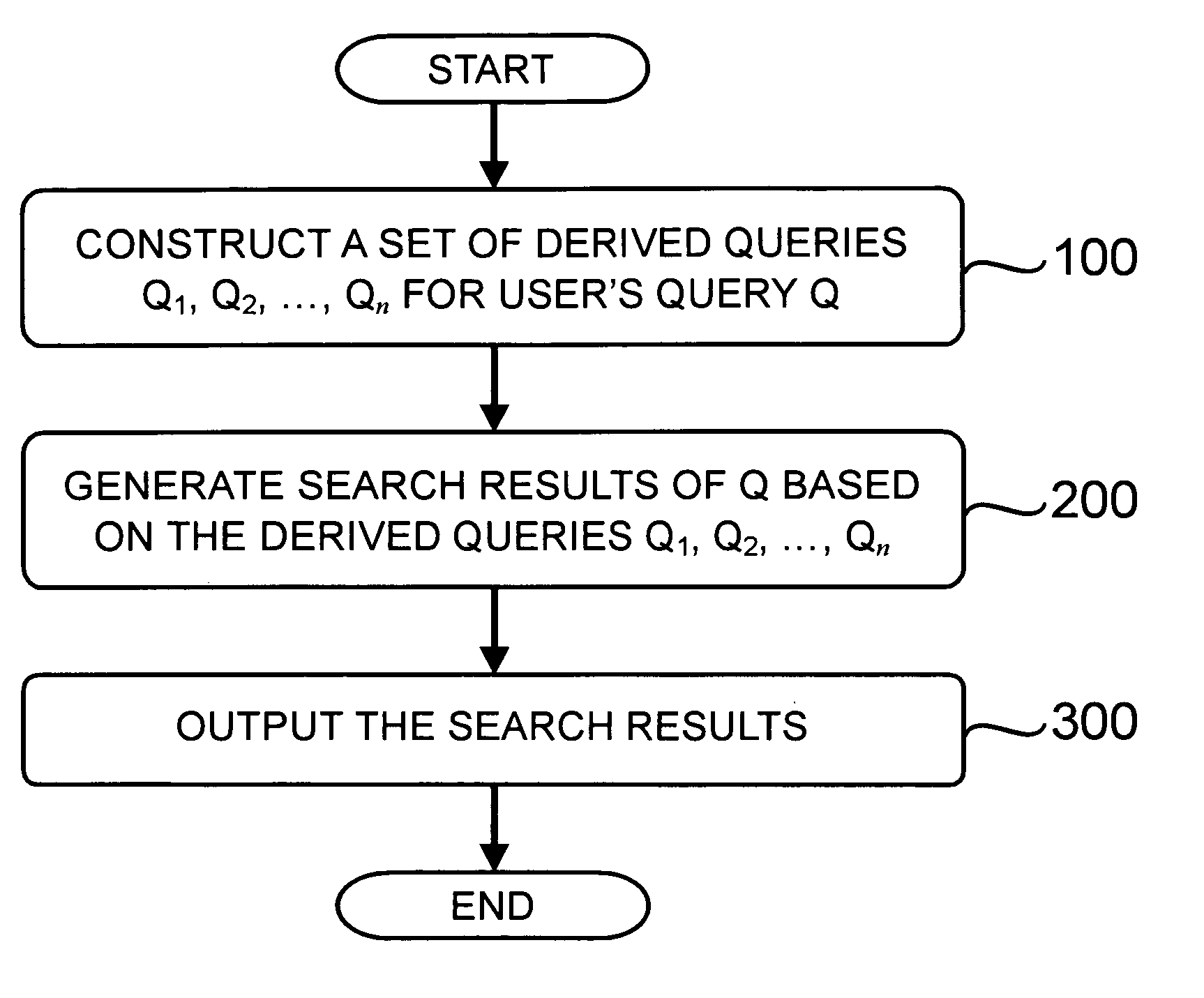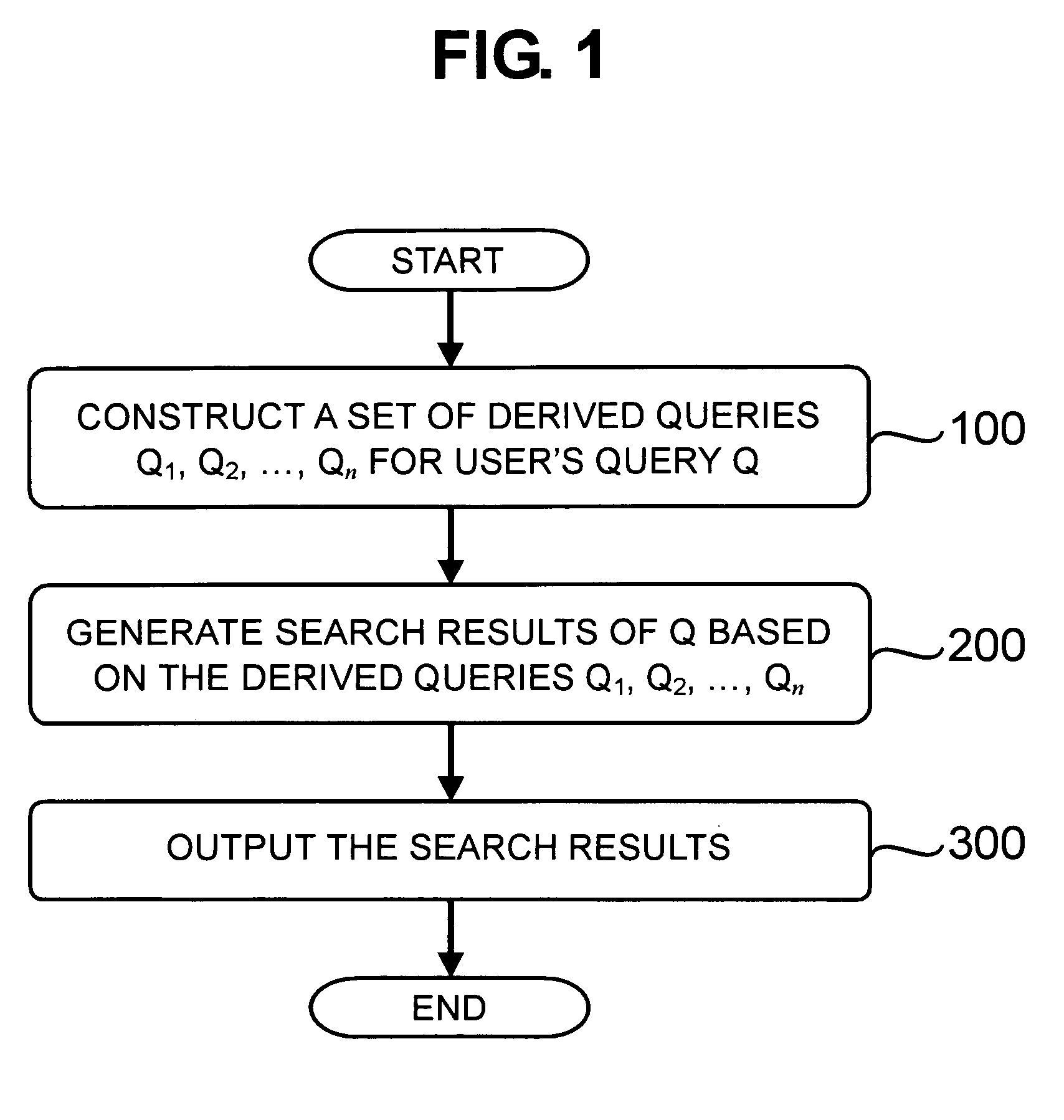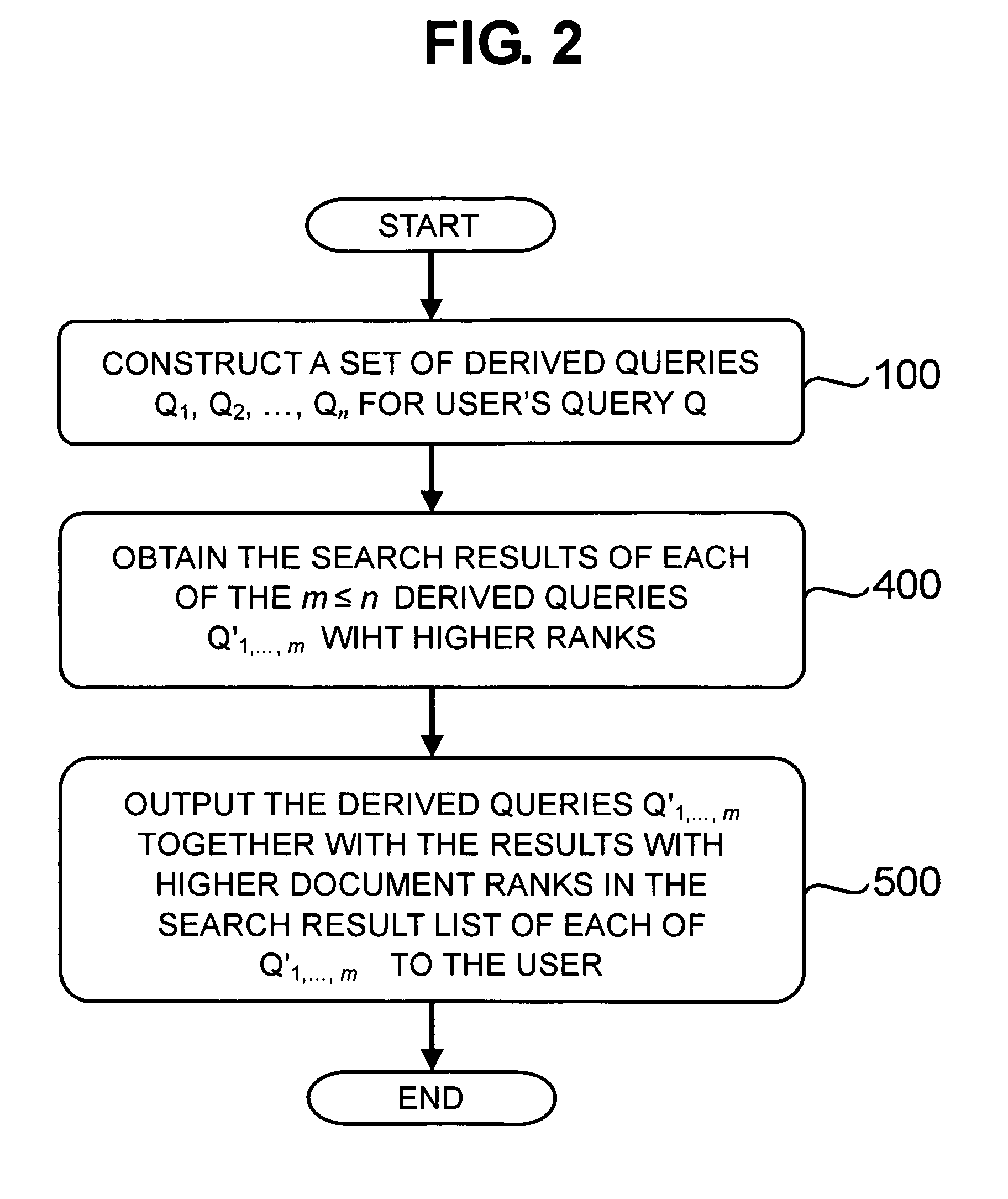Method for presenting search results
- Summary
- Abstract
- Description
- Claims
- Application Information
AI Technical Summary
Benefits of technology
Problems solved by technology
Method used
Image
Examples
Embodiment Construction
[0024] Methods and systems consistent with the principles of the invention can be implemented within conventional document retrieval system architectures, such as an Internet search engine. As would be known by anyone of ordinary skill in the art, a search engine system consists of three major components, namely a crawling component for discovering and collecting web documents (HTML and other data format documents), an indexing component for building an index of the crawled web document collection, and a retrieval (or search) component that in response to a search query, identifies via the index a subset of documents as the search results that are relevant (by some ranking criteria) to the search query. As a large-scale document retrieval system, a search engine typically uses inverted indexes, i.e., indexes that record for each keyword (called an index keyword or a term) a list of documents that contain that keyword. Such a list is usually termed an inverted list. An inverted index...
PUM
 Login to View More
Login to View More Abstract
Description
Claims
Application Information
 Login to View More
Login to View More - R&D
- Intellectual Property
- Life Sciences
- Materials
- Tech Scout
- Unparalleled Data Quality
- Higher Quality Content
- 60% Fewer Hallucinations
Browse by: Latest US Patents, China's latest patents, Technical Efficacy Thesaurus, Application Domain, Technology Topic, Popular Technical Reports.
© 2025 PatSnap. All rights reserved.Legal|Privacy policy|Modern Slavery Act Transparency Statement|Sitemap|About US| Contact US: help@patsnap.com



